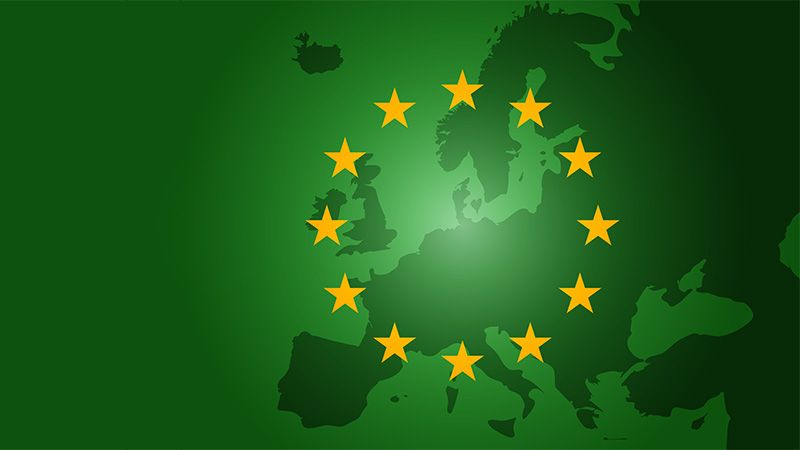European Green Bond Standard (EUGBS) issuances worth hundreds of billions of euros could be on the way when the standard takes effect on 21 December 2024, according to research from the Institute for Energy Economics and Financial Analysis (IEEFA).
The standard requires the use of proceeds to be aligned with the European Union (EU) taxonomy, which defines whether an economic activity is considered environmentally sustainable. As taxonomy-aligned investments reached €249bn in 2023, there is “significant potential” for applying the new green bond label, the report said.
“Projects are already in place to support considerable European green bond supply uptake. As investments aligned with the taxonomy continue growing, the new label will become a prominent subset of the green bond market,” said Kevin Leung, author of the study and sustainable finance analyst at IEEFA.
While prominent existing green bond issuers could potentially align with the standard, the research suggests financial institutions and corporates may become frontrunners.
“There is a minimal additional burden for banks as they are already expected to detail their EU taxonomy-aligned assets, which could determine the eligible pool for European green bond funding,” continued Leung. “Non-financial corporate issuers with eligible investment pipelines may find it almost effortless to align with the label.”
The research calls on public entities – including supranational organisations, governmental agencies and sovereigns – with sustainable project pipelines to also lead uptake of the label.
“They are well-positioned to issue sizeable benchmark bonds that spur wider participation from other issuers facing proportionately higher hurdles to meet EUGBS requirements,” said Leung. “For example, the EU’s NextGeneration Green Bond programme has an unspent fully taxonomy-aligned pool of €53.5bn. The EU could adopt the green bond label for this while establishing best practices.”
Is the EUGBS enough?
The tough part of the EUGBS is the requirement that 100% of the assets, capex or opex financed must be taxonomy aligned, commented Hans Biemans, head of sustainable markets at ING and member of the EU platform on sustainable finance. Given this, he expects the larger part of the market to continue to use the ICMA green bond standard, with many also looking to the ‘voluntary’ EUGBS disclosure templates.
According to Biemans, this is a lighter regime under which issuers must fill in some templates and disclose them. Crucially, however, 100% EU taxonomy alignment is not a requirement for the voluntary templates – issuers just disclose to what extent they are aligned.
Although green bonds and EUGBS green bonds “are important tools in steering positive impact and contribution to environmental objectives”, sophisticated financial institutions that already integrate ESG risk factors in their investment decisions want to know what the financial costs and benefits are of the climate transition measures that a company takes. The EUGBS, therefore, “is not enough”.
“If we want to create more impact, then accounting rules must be adjusted. Under current accounting rules, ESG ESG-related costs often harm profitability and are difficult to justify for companies. If carbon impact had to be accounted for in financial statements, then investments in decarbonisation would suddenly be profitable. Companies would invest more willingly and it would also create many jobs. Win-win for business, people and planet.”
Likewise, Daniel Karnaus, portfolio manager at Vontobel, said the EU ‘gold standard’ will bring further fragmentation of the market for labelled bonds and will risk weakening the reputation of the already existing green bonds according to ICMA GBP.
“With an increasing supply of green bonds, the so-called ‘greenium’ has almost completely disappeared over the years. This greenium was an incentive for issuers to issue green bonds, among others, as the slightly cheaper capital raising covered the additional costs incurred by the issuance of green bonds compared to standard bonds. Since the EUGBS imposes even greater requirements on issuers, and the greenium for EUGBS is unlikely to be significantly higher than for green bonds according to ICMA GBP, the green bond market according to EUGBS could remain a niche for the time being.
Despite being convinced of the value that the concept of green bonds has, Karnaus expects it plays less of a role whether it is a green bond according to ICMA GBP or EUGBS: “What is very important to us in this context is the sustainable business model of the issuer.”








